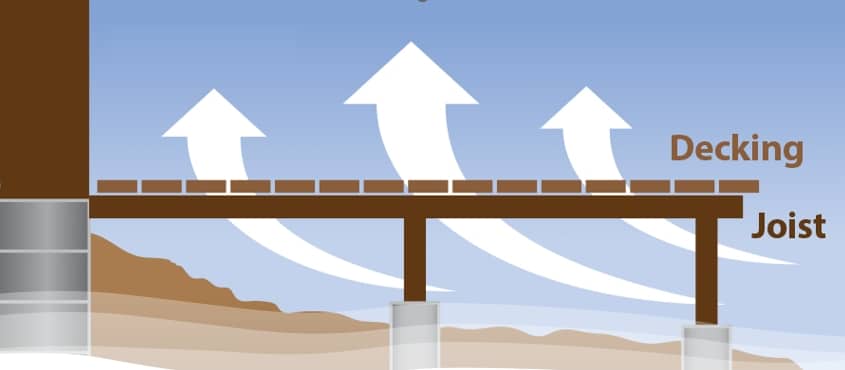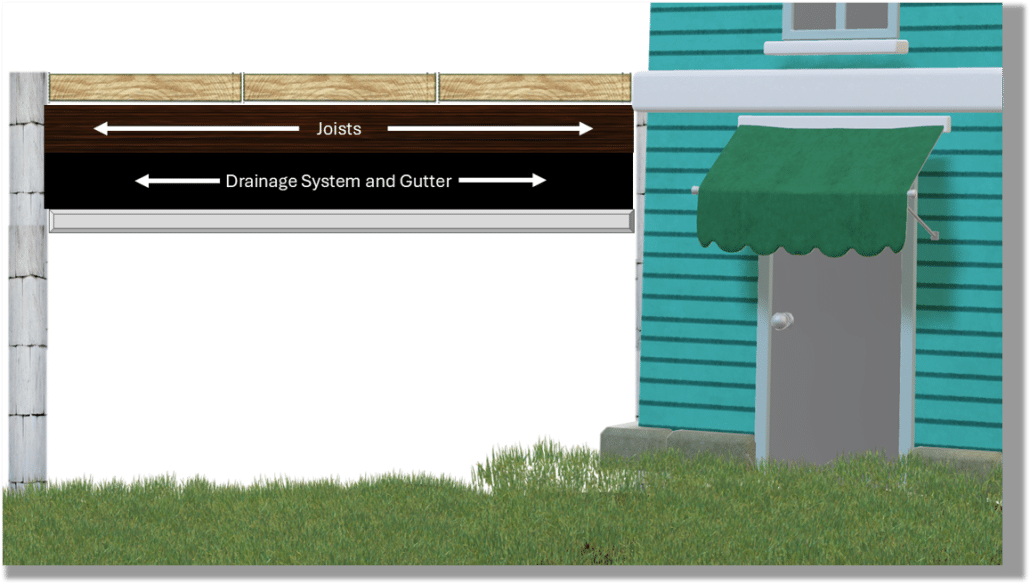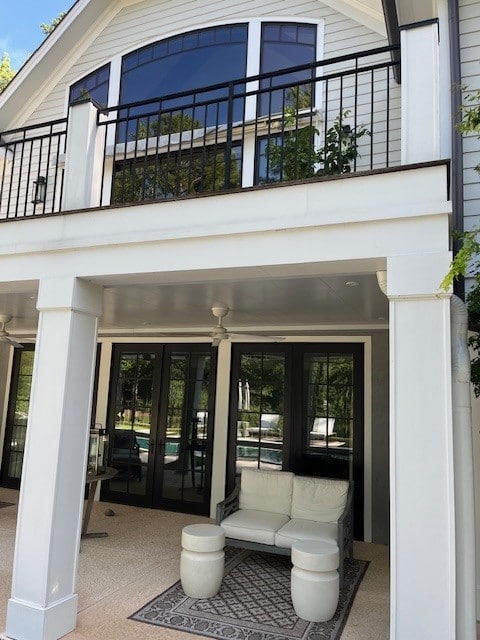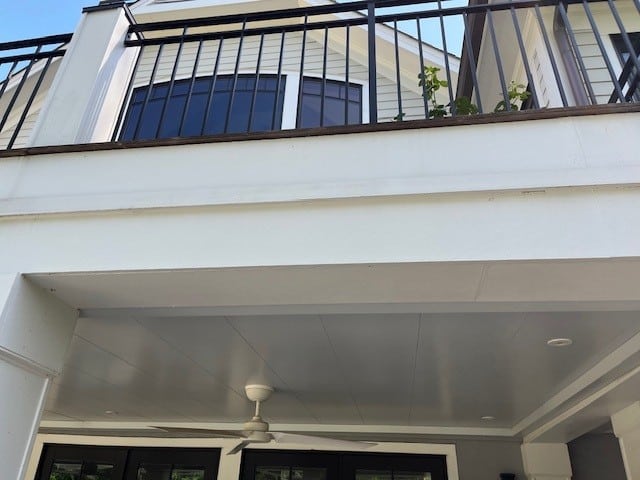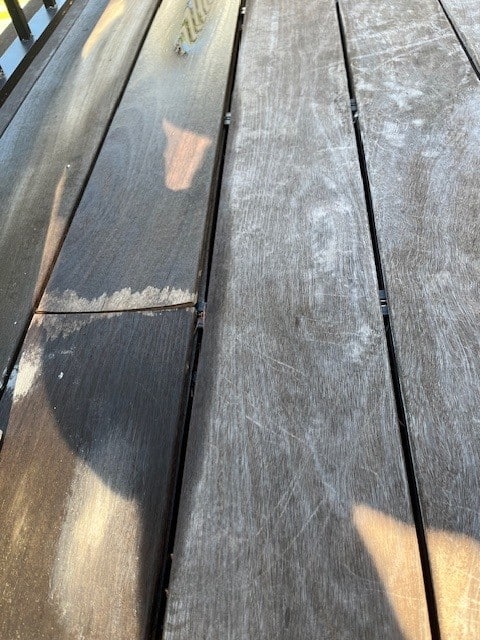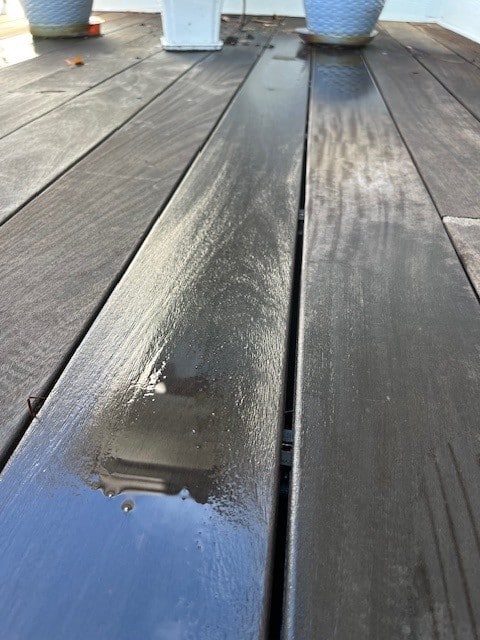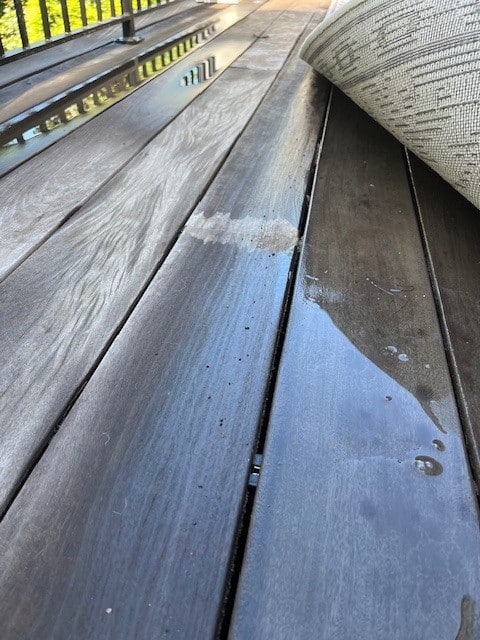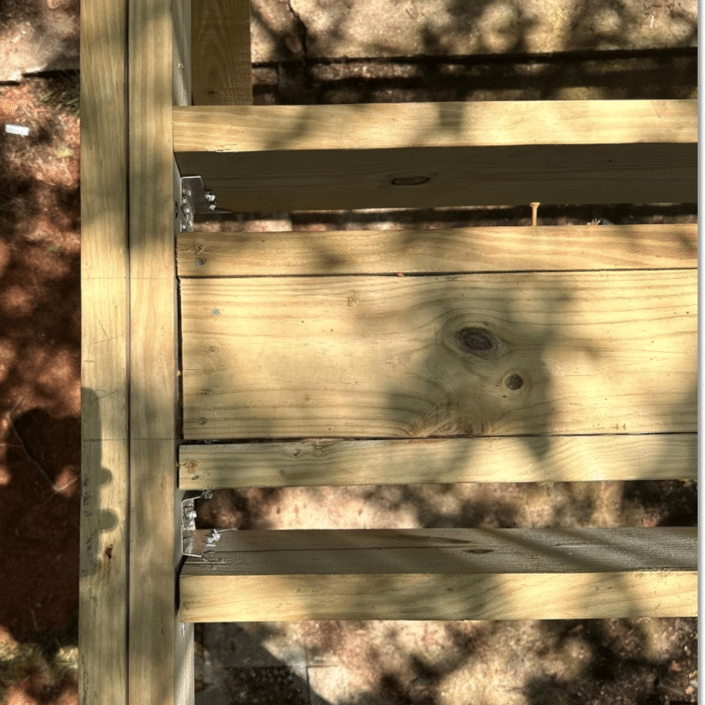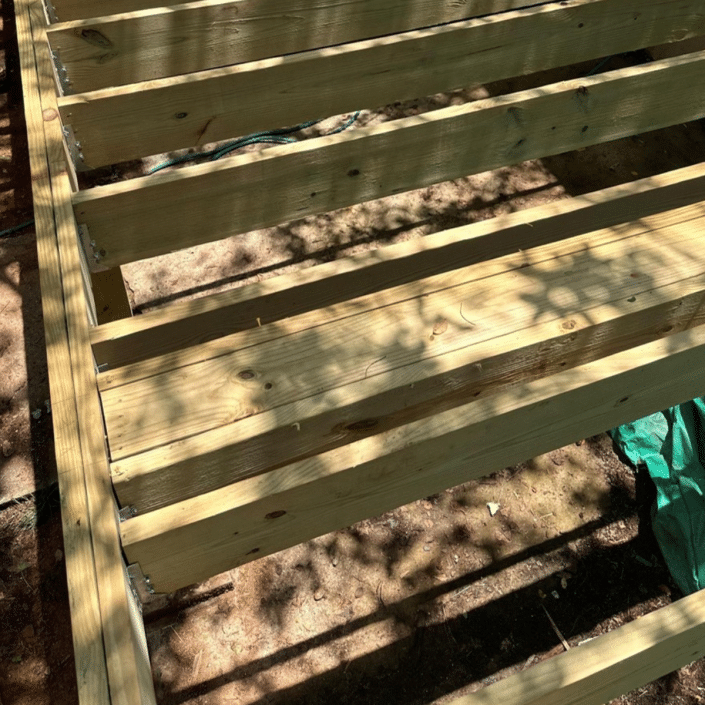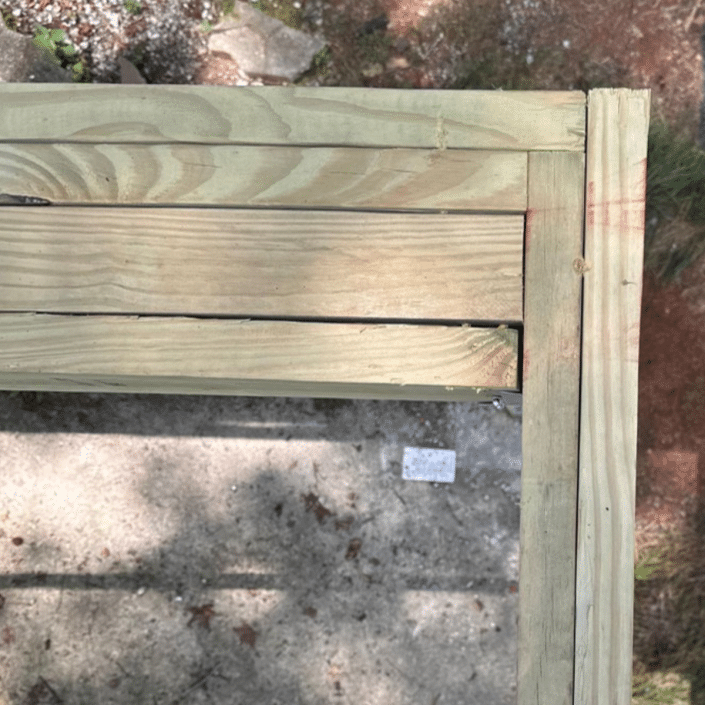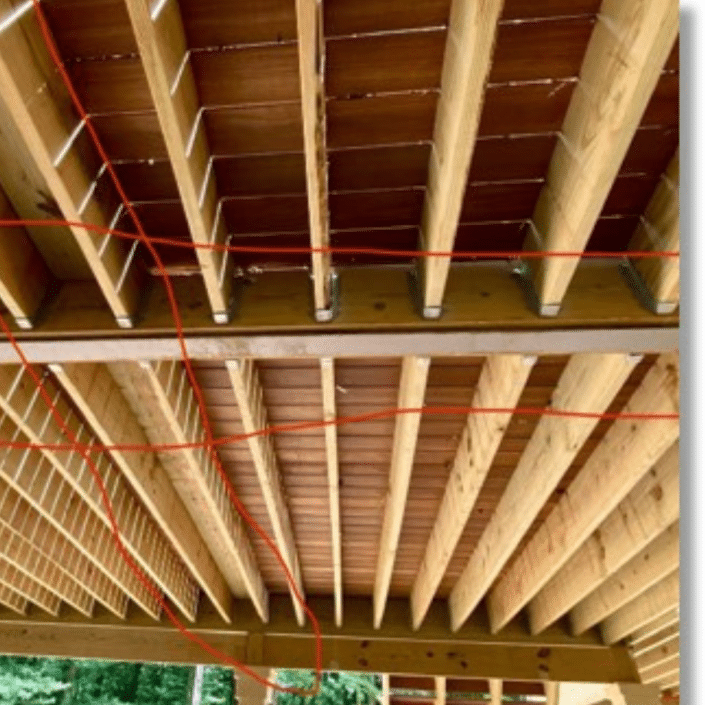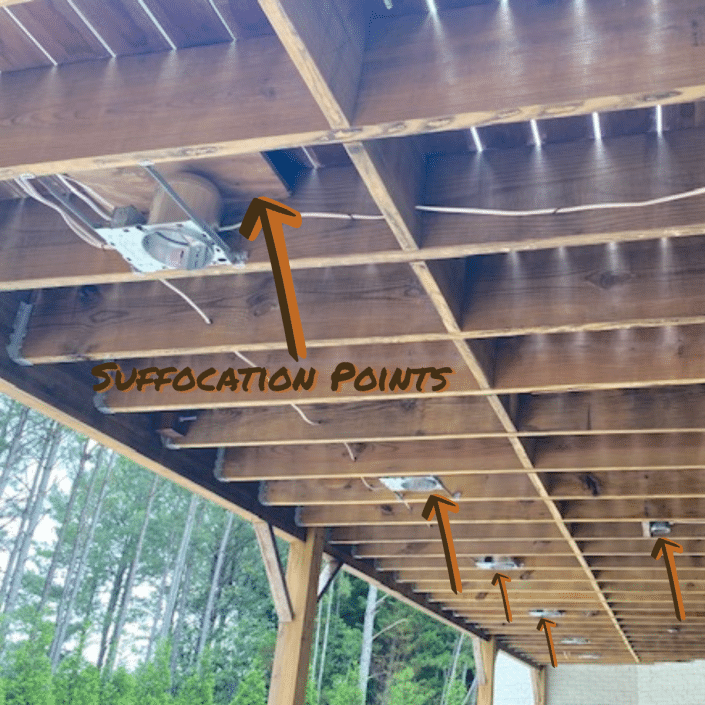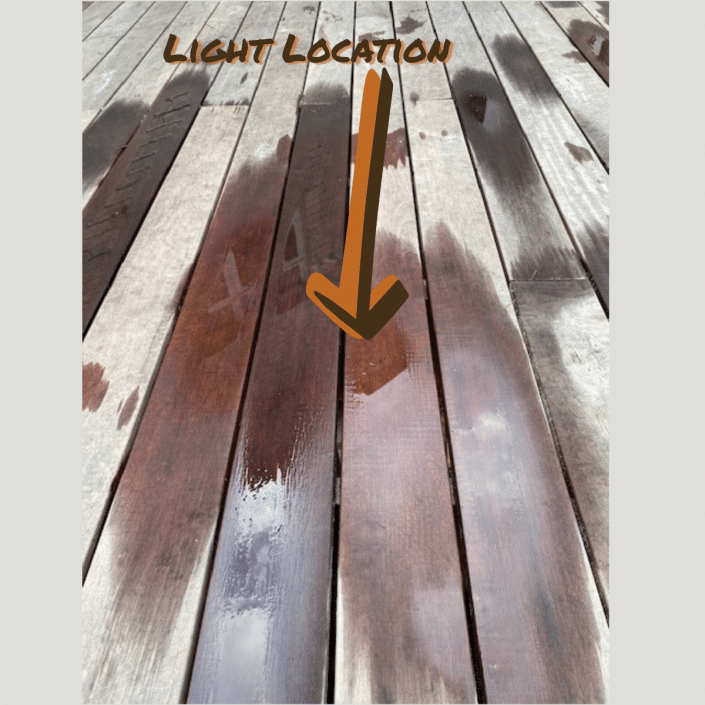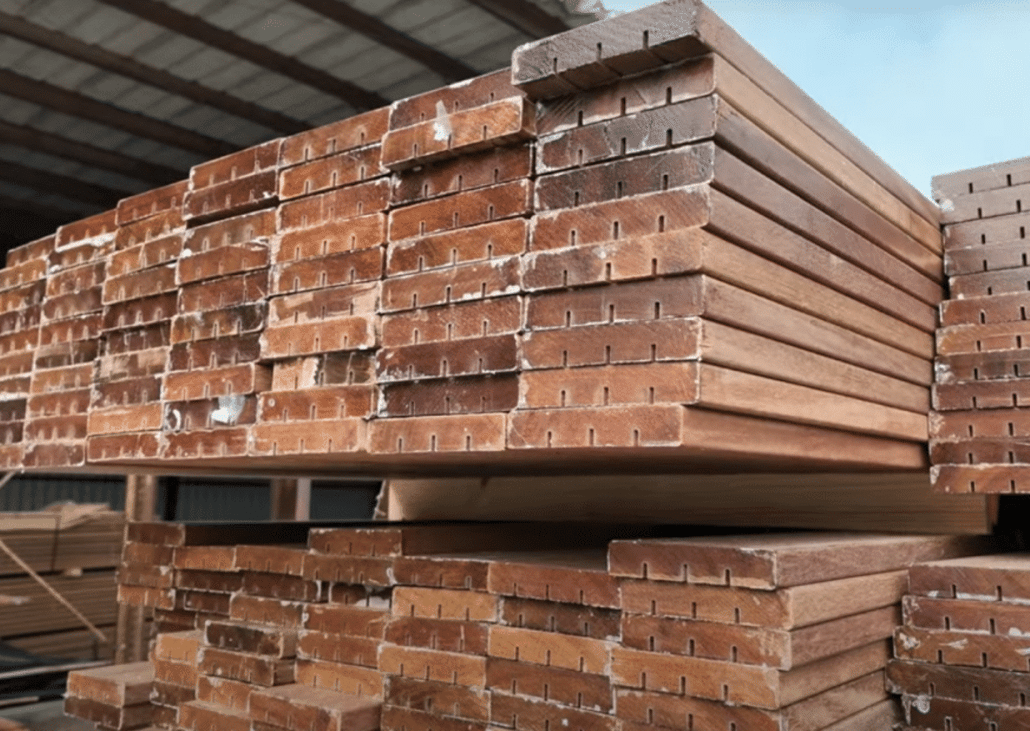Brazilian Wood Depot
6770 Buford Highway NE
Atlanta, GA 30340
🌧️ The Science Behind Cupping
When airflow beneath a deck is restricted, the underside of each board stays wetter than the top. This moisture imbalance causes the board’s bottom to expand while the top remains dry — creating an upward curve known as cupping.
This graphic illustrates what happens when the air-moisture content (AMC) beneath a deck is higher than the AMC above it.
☀️ Sunlight dries the top of the boards, pulling moisture out and causing the surface fibers to shrink slightly.
💧 Moisture trapped below keeps the underside swollen and under expansion pressure.
The result? Uneven movement between the two surfaces — and the boards begin to cup upward.
Dictation Polisher for Quick Copy Writing said:
⚙️ The Three Main Causes of Hardwood Deck Cupping
- Low-Clearance Framing & Blocked Ventilation
- Deck Drainage Systems (Membrane or Pan Style)
- Improper Framing That Suffocates Boards
For best results, pair your drainage design with Heritage Premium Framing Lumber — its durability and engineered structure help maintain even spacing, consistent airflow, and long-term deck stability.
1. Low-Clearance Framing & Blocked Ventilation:
✅ Grade the ground away from the home or structure so water drains naturally.
✅ Maintain about 1/8″ spacing between deck boards to allow lateral ventilation and runoff.
✅ Never restrict airflow — keep the area beneath the deck open and encourage cross-ventilation from all sides whenever possible.
Consistent airflow keeps the moisture content balanced above and below the boards, ensuring a longer-lasting, more stable deck.
2. Deck Drainage Systems — This Is a Big One!
We see a lot of these installations, and with the right design, they can work beautifully. The key is understanding how each drainage type affects airflow and moisture balance beneath your deck.
There are two main types of deck drainage systems:
- Membrane Systems (Rubber or Vinyl)
- Rigid Pan Systems
Both systems can perform well if airflow is properly designed. Unfortunately, many decks are designed without this forethought which can lead to cupping. See some of these instances below.
Membrane Systems (Rubber or Vinyl)
These membrane-style drainage systems are popular thanks to their easy installation and cost-effective design. However, they are also more restrictive to airflow than rigid or pan-style systems — particularly around the decking boards themselves.
Because the joists remain outside of the membrane cavity, they stay well-ventilated, which is good for framing longevity. But the decking boards above receive less airflow, trapping humidity against their undersides and increasing the potential for cupping and surface distortion over time.
Rigid or Pan Drainage Systems
These systems, which hang or attach below the joists, are generally more airflow-positive than membrane-style setups. By leaving a gap between the bottom of the joists and the top of the drainage pan, air can circulate freely — and in some designs, small duct fans are used to actively move air through this cavity.
This improved ventilation benefits both the hardwood decking above and the framing longevity below, reducing trapped humidity and surface distortion.
However, even with better airflow, cupping can still occur in humid environments which is why it is still worth considering the Bottom Grooves or Bottom Kerfs. Read on to Solutions, to learn more about this preventative measure.
📌 Pro Tip:
For maximum moisture control, pair Heritage Framing with bottom-grooved hardwood boards. The grooves promote under-deck air circulation, helping to equalize moisture from top to bottom — dramatically reducing the potential for cupping over time. Heritage’s high-grade, pressure-treated construction resists rot, maintains spacing integrity, and provides a stable foundation for any under-deck drainage design.
For an even more advanced solution, consider integrating Hardwood Deck Tiles with your Heritage framing system. This combination allows for exceptional airflow and — even more importantly — provides easy top-down access to the drainage system for cleaning and maintenance. (More on that in the Preventative Solutions section below.)
3. Improper Framing That Suffocates Boards
Take a close look at the joist systems in these photos. In the first two examples, the deck boards run perpendicular to the joists, as they should. However, where those boards cross over areas of excessive joist blocking, the wood begins to cup — typically within the 6″–8″ zone that comes into direct contact with that extra material.
In the next examples, the blocking runs in the same direction as the deck boards, which is even more problematic. In those cases, the entire length of each board cups, since airflow beneath the surface is completely restricted along the full run.
You’ll also notice how housing for recessed can-lights is often attached to large sections of solid blocking. These heavy, enclosed areas trap humidity and heat directly under the decking, again forcing the top surface to dry faster than the underside — a classic recipe for cupping and distortion. The last image shows that the Hardwood Deck boards are holding water ONLY where the light houses are located.
🚧 Preventative Solutions: Design Strategies to Prevent Cupping
🧩 Hardwood Deck Tiles: The Smart Solution for Low-Airflow Decks
Certain applications make airflow-positive designs nearly impossible — such as in-ground pool surrounds, rooftop decks with waterproof membranes, or very low-clearance decks. In these cases, Hardwood Deck Tiles are the best and most effective solution.
These tiles are:
✅ Cost-effective
✅ Easy to install
✅ Perfect for low-clearance or waterproofed applications
Each 24″ × 24″ tile is preassembled and designed specifically for low-airflow environments, making them impervious to cupping risks. Available in multiple premium hardwood species — including Ipe, Cumaru, Garapa and Red Balau — these tiles deliver the same luxury and durability as traditional decking with unmatched practicality.
🔧 Why Deck Tile Accessibility Matters (Very Important!)
Being able to access your drainage system from above is critical. Over time, leaves, dirt, and debris will inevitably enter and clog the drainage channels. If the drainage system cannot be accessed from below — as is the case with most membrane and even many rigid-pan systems — maintenance becomes nearly impossible.
That’s where Hardwood Deck Tiles shine. Because they require no mechanical fasteners for installation, they can be lifted and replaced easily, giving full access to the drainage system below. This simple feature makes ongoing maintenance and cleaning straightforward — preventing costly moisture buildup or system failure later on.
📌 Pro Tip:
See real-world installations and maintenance examples on our Hardwood Deck Tiles page and explore the Deck Tiles Gallery for design inspiration.
🪵 Bottom-Grooved Deck Boards: A Proven BWD Exclusive
When Deck Tiles aren’t the ideal fit, traditional decking boards — 1×6 or 5/4×6 — can be bottom-grooved to significantly reduce the likelihood and severity of cupping.
Bottom grooves allow the underside of the board to expand and contract more evenly with the surface by relieving internal stress caused by trapped moisture. This results in greater long-term stability, especially in challenging conditions such as:
✅ Decks built over under-deck drainage systems
✅ Areas with excessive blocking, beams, or solid framing contact
✅ Low-clearance decks or structures with limited ventilation
At Brazilian Wood Depot, we’re proud to be the only supplier in the U.S. offering precision bottom-grooved hardwood boards — a technique we’ve perfected for nearly 20 years. While not as fully moisture-impervious as Hardwood Deck Tiles, this method has delivered consistent, proven success in minimizing cupping and preserving deck performance across thousands of installations.
📌 Pro Tip:
When ordering bottom-grooved boards, consider requesting a few ungrooved boards for perimeter or end runs. This keeps the grooves from showing at the board ends, maintaining a clean, finished look from ground level.
Since Brazilian Wood Depot offers full-length bottom grooving only, you can easily customize on-site by lifting the blade before reaching the board ends — creating a smooth transition that hides the grooves while still maintaining airflow and moisture balance across the majority of the board.
Joist Design
Here are two smart fixes for the problems caused by excessive blocking.
✅ First Image: Ladder blocking reduces surface contact, helping prevent cupping.
✅ Second Image: The triple beam is dropped ½” and built back up with narrow marine-grade plywood strips. This keeps deck boards elevated, reducing cupping and protecting the beam from rot.


🌬️ Active Airflow Systems & Retroactive Solutions
In addition to Deck Tiles and Bottom-Grooved Boards, there are several active airflow systems and retroactive solutions that can dramatically improve deck performance — especially in areas where moisture and stagnant air are persistent problems.
✅ Humidity-Activated Duct Fans:
Smart ventilation fans can be installed and wired into the under-deck space to automatically turn on when humidity levels rise. These duct-style fans circulate air beneath the deck, helping equalize temperature and moisture levels between the top and bottom of the boards.
-
Ideal for preventing cupping in new installations.
-
Also effective as a retroactive fix for decks that have already begun to cup.
✅ Integrated Vents & Grates:
Installing vent panels or grates throughout the framing structure promotes consistent airflow, even in enclosed or low-clearance decks. These vents allow humidity to escape and reduce the stagnant conditions that often cause board distortion.
✅ Combination Systems:
The most effective solution often combines grated vents with humidity-activated fans, ensuring air movement and moisture control in all conditions — even during humid weather or rainy seasons.
💡 Final Takeaway: Airflow Always Wins
Whether you’re building a new deck or improving an existing one, systems that allow cross-flow ventilation between the drainage system and the underside of the joists will always outperform airflow-restrictive designs.
In short:
-
Deck Tiles and Bottom-Grooved Boards offer the strongest preventative defense.
-
Fans and vents serve as powerful retroactive tools to restore balance and extend deck life.
For guidance on airflow management, drainage integration, and installation strategies, explore our comprehensive Installation Guides and technical framing resources at Heritage Framing – Technical Specifications.




